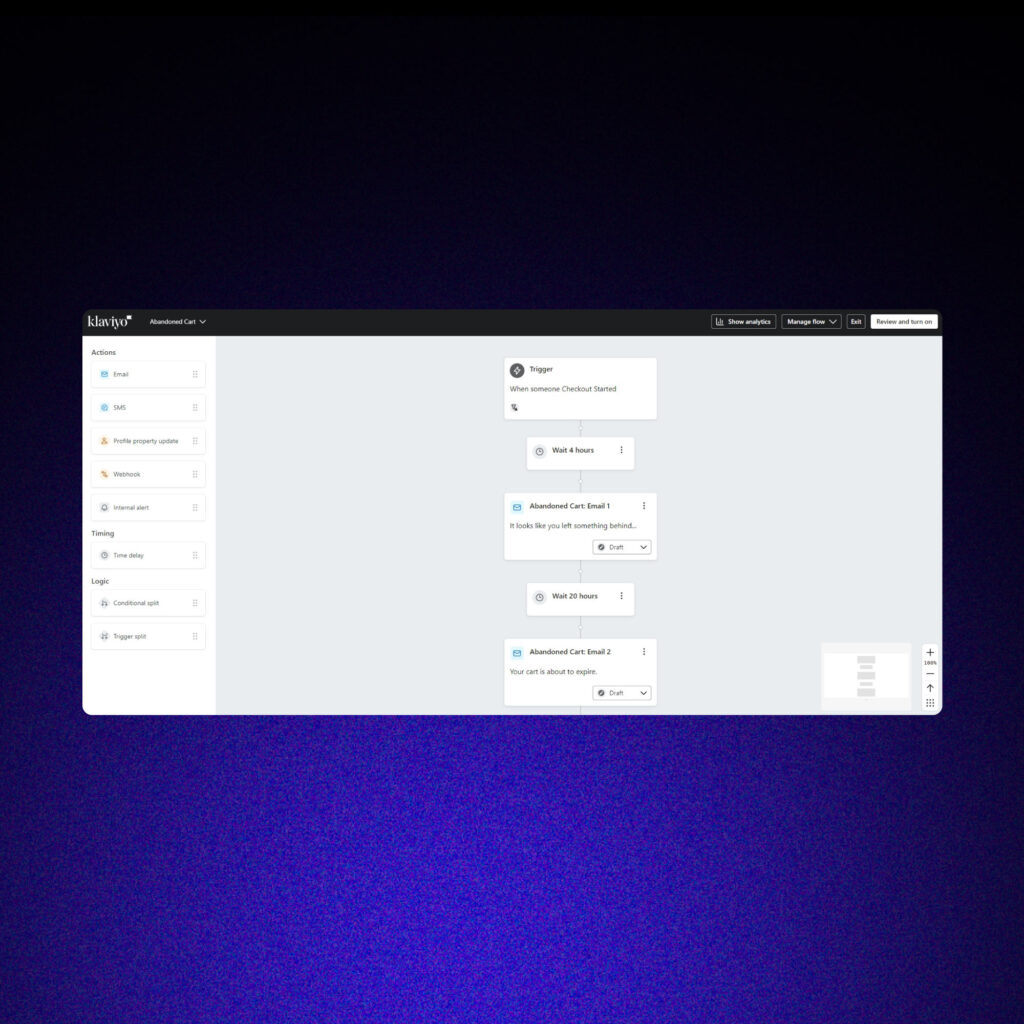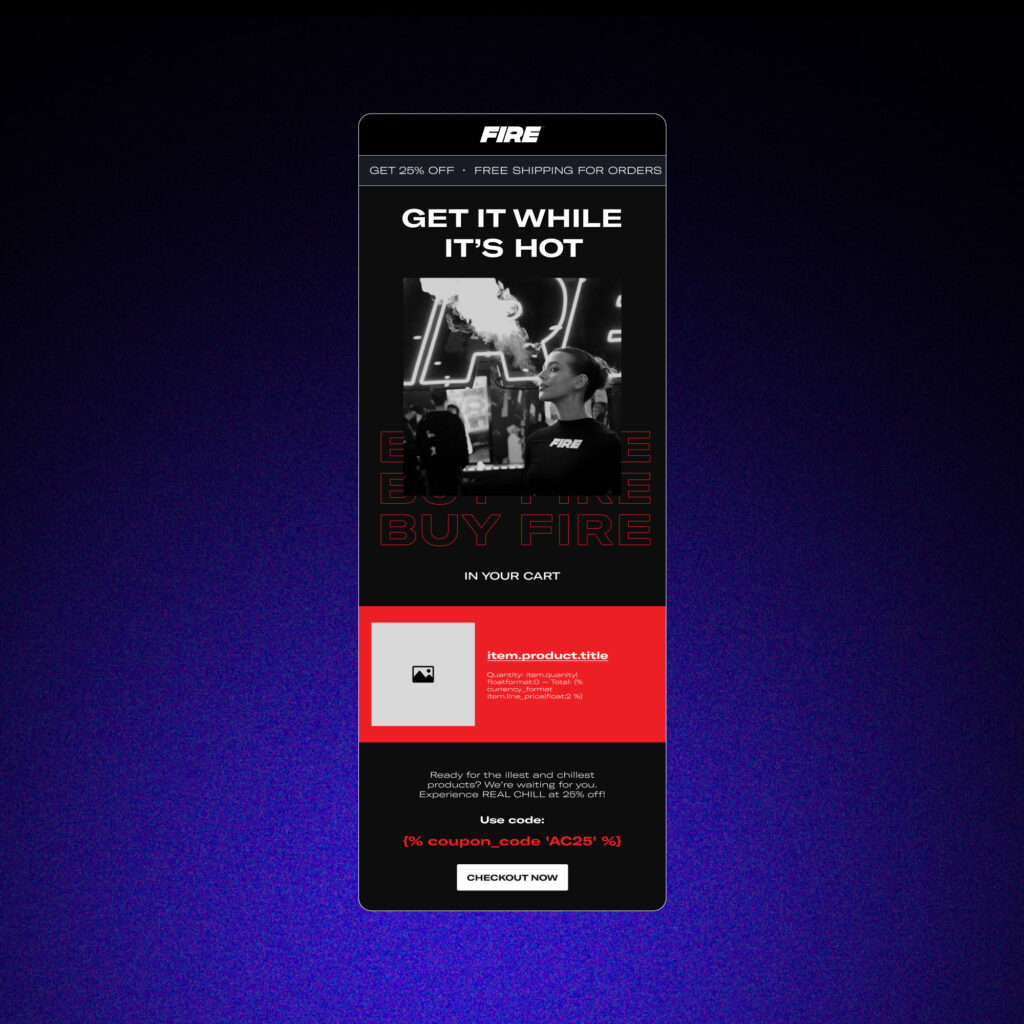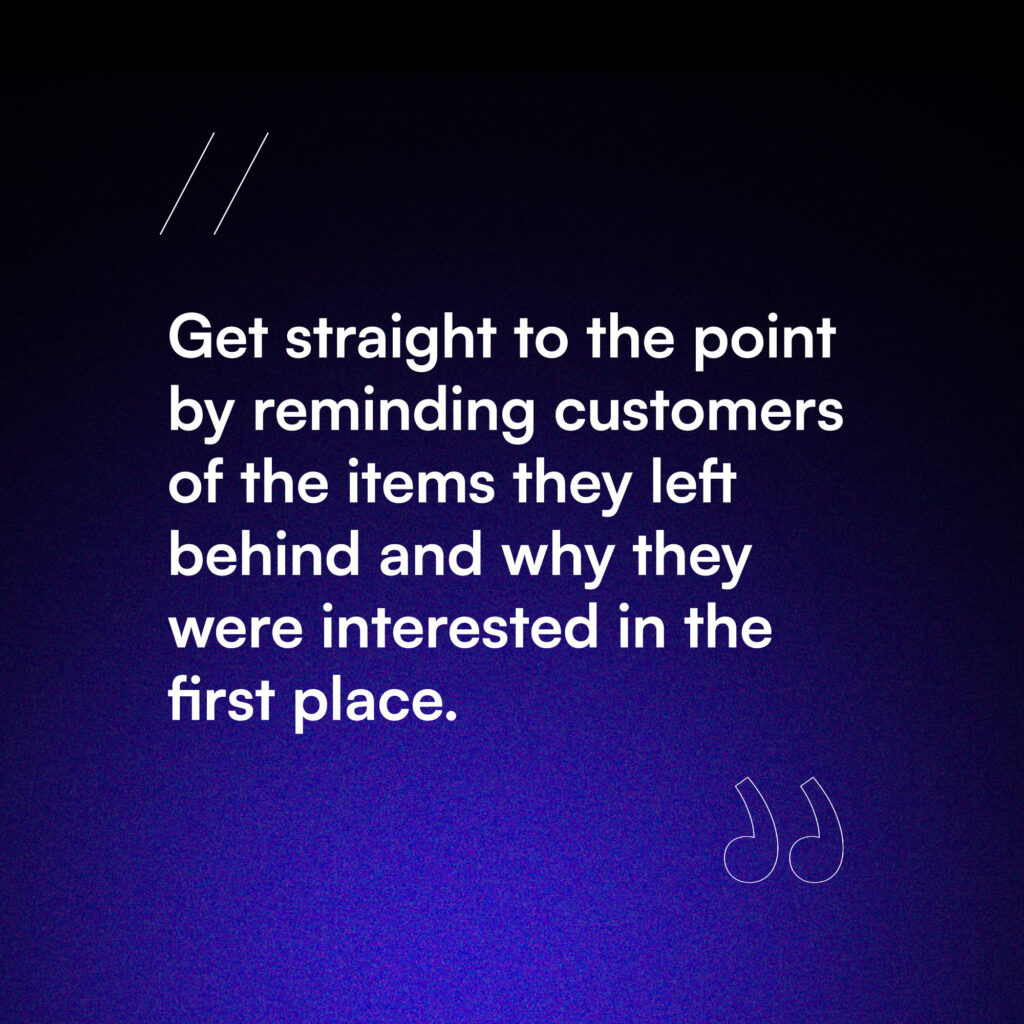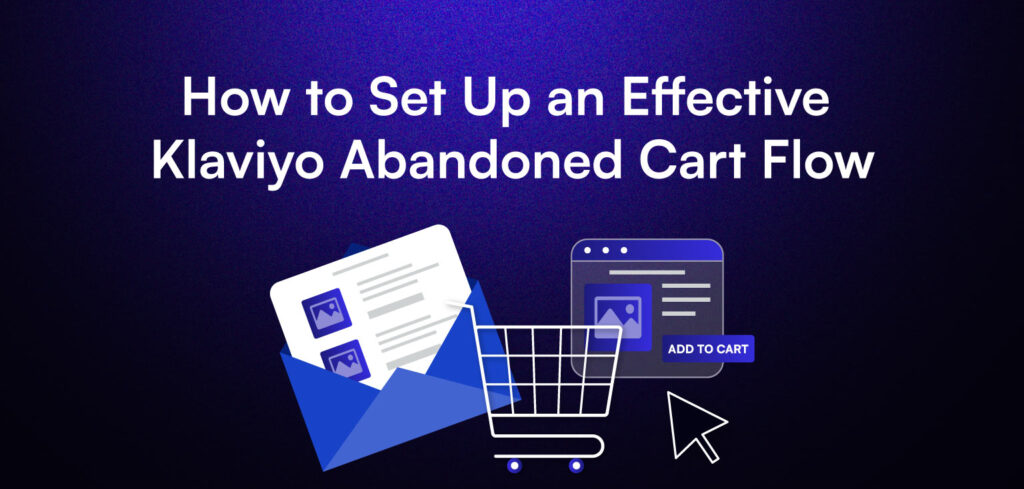Shopping cart abandonment is a common issue in e-commerce, with a significant portion of customers leaving items in their carts without completing the purchase.
A well-crafted abandoned cart flow can be a powerful tool to recover these lost sales.
This guide will walk you through the process of setting up an effective Klaviyo abandoned cart flow.
What is an Abandoned Cart Flow?
An abandoned cart flow consists of a series of automated emails sent to customers who have added items to their shopping cart but haven’t completed their purchase. These emails serve multiple purposes, from reminding customers about their forgotten items to addressing potential concerns or objections.
They can also provide incentives to complete the purchase and offer customer support if needed. Typically, the flow comprises 2-4 emails sent over a period of days or weeks, each with a specific purpose and message designed to guide the customer back to their cart.
Why Your Ecommerce Business Needs an Abandoned Cart Flow
Abandoned cart flows are essential for several compelling reasons. Primarily, they help recover lost sales, driving the highest average RPR ($3.65) and the highest average placed order rate, or conversion rate (3.33%), of all flows. (Data from Klaviyo)
Apart from sales recovery, these flows provide valuable insights into your customers’ behavior, preferences, and potential checkout issues. This information can be used to improve the overall shopping experience and reduce future cart abandonments.
Moreover, abandoned cart emails offer an opportunity to connect with customers and build relationships. By offering helpful information, addressing concerns, and providing excellent customer service, you can transform a potential lost sale into a loyal customer.
And last but definitely not the least, a well-crafted abandoned cart email flow reinforces your brand’s value proposition and showcases your commitment to customer satisfaction, which would, in turn, improve your overall brand perception.
Getting Started with Your Klaviyo Abandoned Cart Flow
Before diving into Klaviyo, it’s crucial to ensure seamless integration with your e-commerce platform, be it Shopify, WooCommerce, Magento, or others. This integration is vital for capturing abandoned cart data and syncing it with Klaviyo in real-time.
Start by making sure that your e-commerce platform’s API is correctly connected to Klaviyo. Then, ensure that customer data, product information, and cart contents are accurately syncing between your store and Klaviyo. Lastly, conduct thorough testing to confirm that abandoned cart events are being properly tracked and transmitted to Klaviyo.
Creating Your Abandoned Cart Flow in Klaviyo
To streamline the process, Klaviyo has pre-built templates that include basic email structures and timing suggestions. These provide a solid foundation for your flow.
Begin by navigating to the “Flows” section in Klaviyo and selecting “Create Flow.” Choose “Abandoned Cart” from the template options, then review and customize the default settings as needed.

Time your Abandoned Cart Emails
Once your basic structure is in place, focus on determining the optimal time intervals between emails. Common practices include sending the first email 1-3 hours after cart abandonment, followed by a second email 24 hours later, and a third email 3-5 days after abandonment. Some marketers opt for a fourth email 7-10 days after abandonment.
Experiment with these timing intervals to find what works best for your audience, considering factors such as product type, average decision-making time for your customers, and typical sales cycle length.
Create Compelling Content
Once you get your timing set, you can then turn your attention to creating great email content. Start with personalized subject lines to encourage opens and then write an engaging body content that would remind customers about the items they left in their carts and address potential objections. Make sure your email design is perfectly aligned with your brand, with a callout to the abandoned item on the upper folds of your email.
Incentives like discounts or free shipping will make completing the purchase irresistible. Couple that with a strong call to action and your abandoned cart email will more easily get those clicks!

Abandoned Cart Emails Best Practices
Ready to craft your Abandoned Cart flow? Here are the best practices we apply at 11 Agency!
Be Concise
When designing your abandoned cart emails, clarity and conciseness are key. Get straight to the point by reminding customers of the items they left behind and why they were interested in the first place.

Write Strong CTAs
When it comes to Abandoned Cart emails, CTAs play a very important role in converting your subscribers into paying customers. When writing these emails, use clear CTAs that would reignite your subscribers’ interest and guide them with ease back to their cart.
This requires CTAs that are benefit-focused, action-oriented, and compelling. You can also place your offers next to the CTA button for added effect!
Read this next: How to Write an Irresistible Email Call to Action (Plus 5 Examples!)
Create a Sense of Urgency
Creating a sense of urgency can significantly boost conversion rates. Incorporate elements like limited-time offers, scarcity messaging, or countdown timers to motivate immediate action. For example, you might use phrases like “Your cart is reserved for the next 24 hours” or “Only 3 left in stock!” to encourage quick decisions.
Optimize for Mobile
Given that more than half all of e-commerce traffic comes from mobile devices, ensuring your emails are optimized for smartphones is crucial. Test your emails on various devices and email clients to ensure a seamless experience across all platforms. This mobile-first approach can significantly improve your conversion rates.
Conduct A/B Testing
Just like in all aspects of marketing, you should be open to change when the numbers are telling you to. Continuously conduct A/B tests or split tests on your Abandoned Cart Flow. Experiment with different subject lines, headlines, hero images, and offers—such as percentage discounts, free shipping, or freebies.
When you find what resonates best with your subscribers, stick to it and replicate it with your other flows!
Troubleshooting Your Abandoned Cart Flows
Despite your best efforts, you may encounter issues with your abandoned cart flow.
Metric Not Triggering
If your flow isn’t triggering as expected, start by double-checking the integration between your e-commerce platform and Klaviyo.
Verify that the flow’s trigger conditions are set up correctly and check for any errors in the flow’s logic or setup. It’s also worth reviewing your website’s tracking code implementation to ensure all necessary data is being captured.
Low Conversion Rates
Low conversion rates can be frustrating, but they offer valuable opportunities for improvement in your abandoned cart flow. If your current strategy isn’t converting well, start by reevaluating your email timing and content.
You might need to offer more compelling incentives and discounts, or improve your email design and mobile optimization to better engage potential customers.
Deliverability issues can also severely impact the effectiveness of your abandoned cart flow. If you suspect your emails aren’t reaching customers’ inboxes, here are things you can and should do:
- Check your sender reputation and email authentication
- Review content for potential spam triggers
- Monitor your email engagement metrics
Ready Yet?
By following these guidelines, you can create a compelling series of emails that not only recover lost sales but also enhance customer satisfaction and loyalty.
With persistence and optimization, your Klaviyo abandoned cart flow can become one of your most valuable automated marketing tools. It will drive sales and foster customer relationships on autopilot, allowing you to focus on other aspects of growing your e-commerce business.


